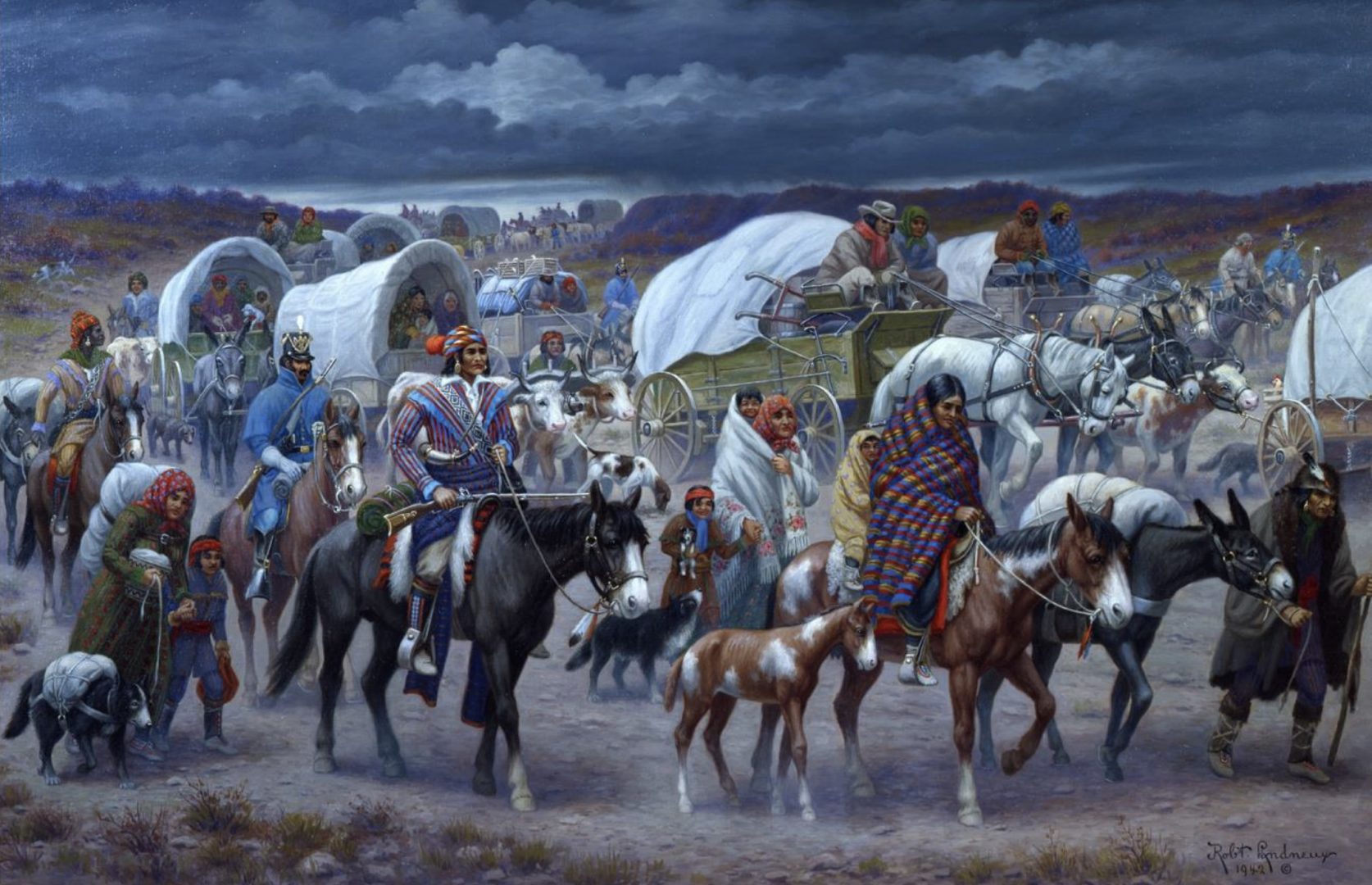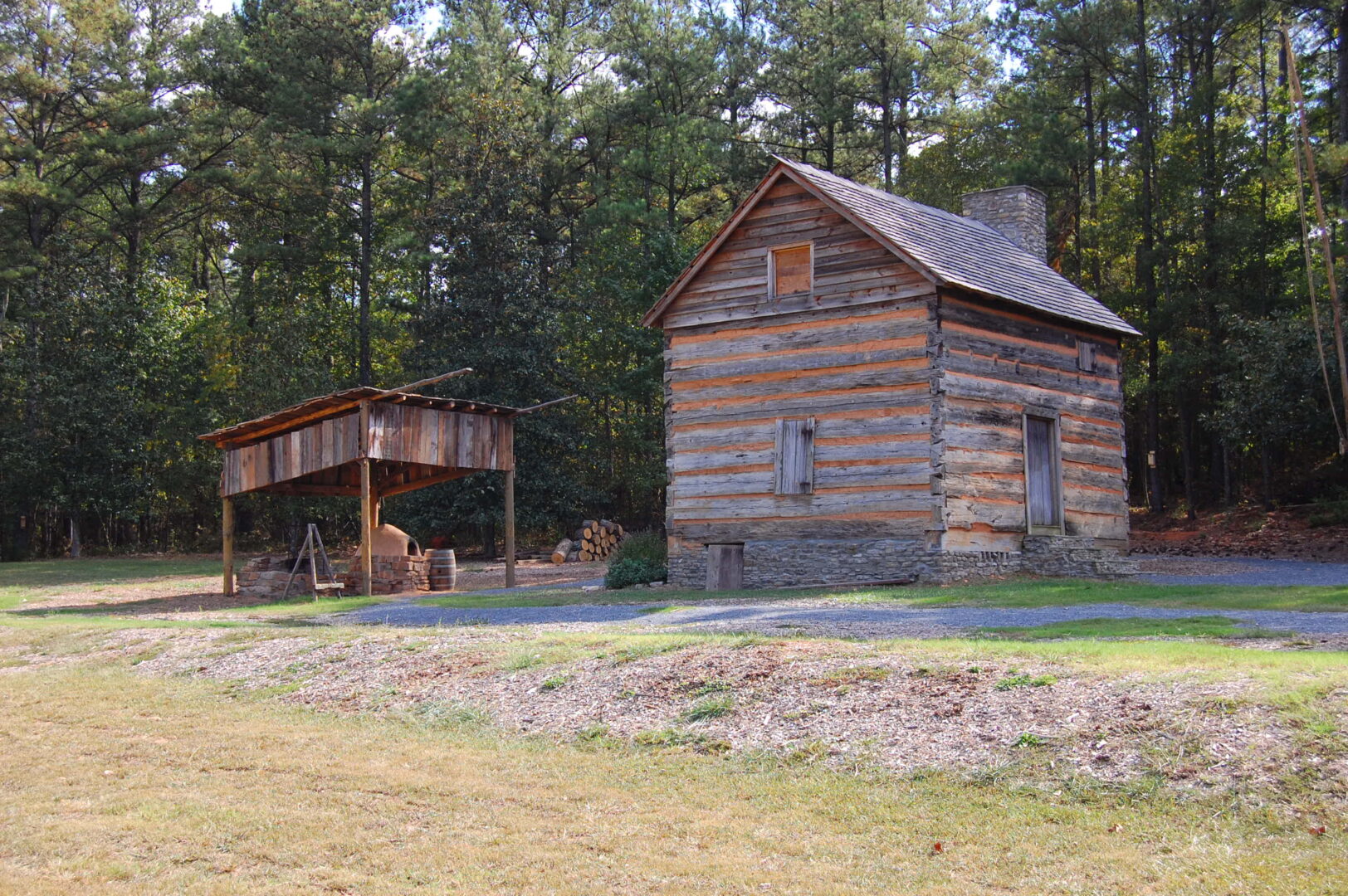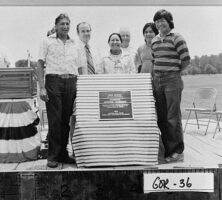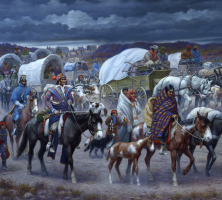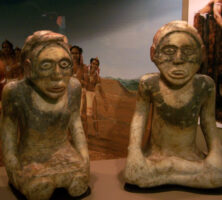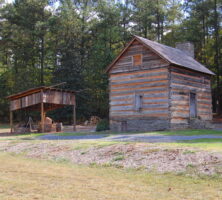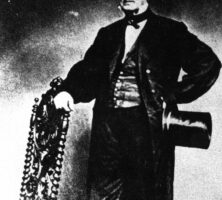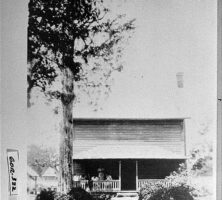The Cherokees, one of the most populous Indian societies in the Southeast during the eighteenth century, played a key role in Georgia’s early history. They were close allies of the British for much of the eighteenth century. During the Seven Years’ War (1756-63) and American Revolution (1775-83), a breakdown in relations with the British and then the Americans led to repeated invasions of the Cherokee homeland. The post-revolutionary era witnessed remarkable Cherokee efforts to cope with land encroachments and territorial loss, and to succeed at nation-building. Increased expansion by the United States in the nineteenth century ultimately resulted in the forced removal of most Cherokee peoples to a region west of the Mississippi River.
Cherokee Society
It is important to first identify what made the Cherokees a distinct social group. The Cherokees occupied a common homeland in the southern Appalachian Mountains known in Georgia as the Blue Ridge, including much of the northern third of the land that would become Georgia. They spoke an Iroquoian language, while most of their indigenous neighbors spoke languages of the Muskogean, Algonquian, or Siouan language families. More important, the Cherokees were bound by kinship networks, as clan membership defined who was and who was not a Cherokee.
Though a shared cultural heritage and political connections also conjoined the Cherokees into a recognizable ethnic group, they were far from a united people. Social, political, and religious activity centered on the local village. They organized themselves into the divisions known during the Historic Period: the Overhill Towns, the Middle Towns, the Out Towns, the Valley Towns, and the Lower Towns. The latter two made up the Cherokee inhabitants of Georgia.
Regionalism further generated divisions. For example, the Lower Towns, such as Chattooga, were situated on the headwaters of the upper Savannah River in present-day Georgia and South Carolina. Their particular location resulted in frequent interactions with Georgians, Carolinians, and Creek Indians. This contrasted to the Overhill Cherokees in present-day east Tennessee. Many of their crosscultural exchanges took place with a different set of neighbors, including the Shawnees and Iroquois. These varying locations and identities influenced the ways in which Cherokees interacted with outsiders. When pursuing a more thorough rendering of Cherokee history than presented here, it is necessary to appreciate these local and regional differences.
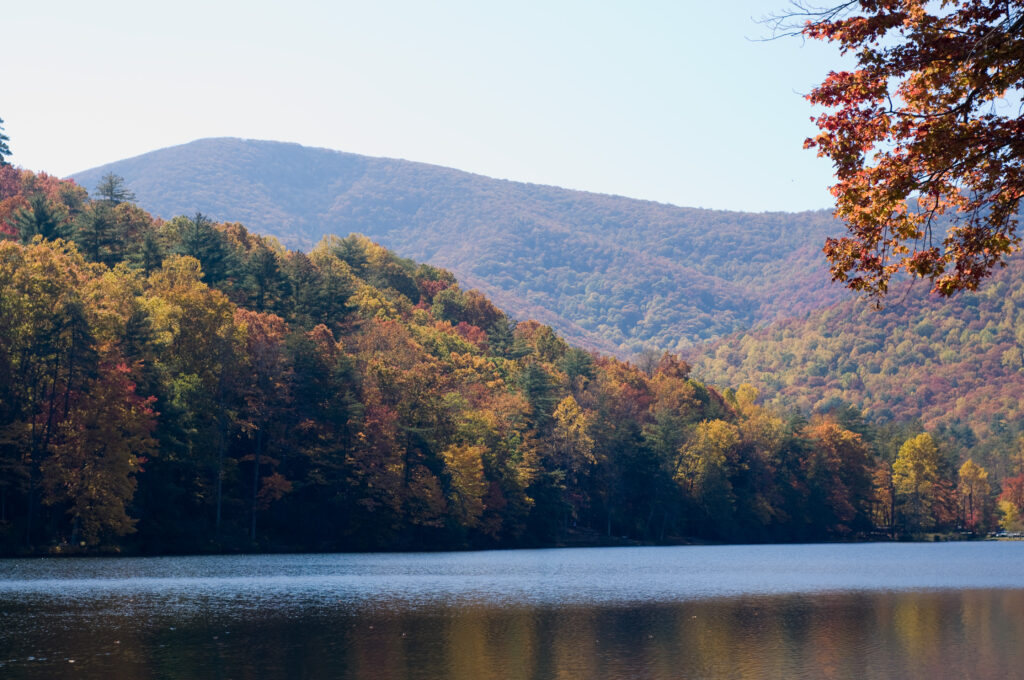
Photograph by Sammy Hancock
Early History
The Cherokees inhabited the mountainous South long before the arrival of Europeans and Africans. Archaeological evidence and Cherokee origin stories indicate that Cherokee forbears settled their historic homeland many generations prior to the Spanish incursions of the sixteenth century. Occupying a land where a complex river system reached the Atlantic Ocean, Gulf of Mexico, and Mississippi River Basin, the Cherokees developed extensive relations with many indigenous peoples. Foremost among these relationships during the Historic Period were those with the Creek Indians.
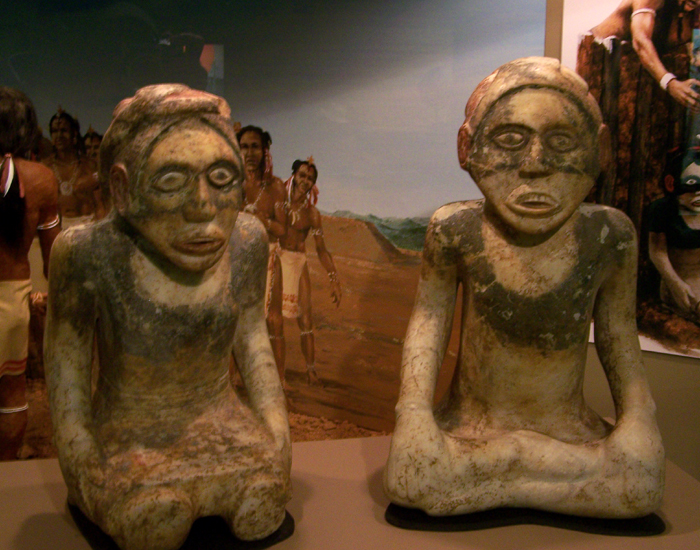
Photograph from Wikimedia
Cherokees and some of the ancestors of the Creeks had a long history of interaction in the north Georgia mountains. Both had ancestors who were part of the Mississippian Period chiefdoms (A.D. 800-1600) and who built impressive mounds throughout Georgia. With the arrival of Spanish explorers and Old World diseases, the chiefdoms collapsed, and remnant populations coalesced into new political entities, such as the Cherokees and Creeks. North Georgia subsequently served as a dynamic borderland between the two groups after the arrival of the British in the Southeast.
English-Cherokee Trade and Alliance
Early Cherokee history experienced a profound change with the founding of Carolina (1670) and Georgia (1733). The Cherokees became key trading partners of the British in Augusta and Charleston, South Carolina. Traders often resided within Cherokee villages as they exchanged tools, weapons, and other manufactured goods for valuable deerskins. The Cherokees were voracious consumers, and many traditional items were replaced by European technology. Access to the English trade gradually changed Cherokee culture, but it also affected power balances within the region. Indigenous peoples vied for control of the trade, which led to sporadic warfare involving both natives and newcomers.
The Yamasee War (1715), for example, was one of the most destructive wars in the colonial Southeast. During that conflict, the Yamasee Indians and their allies warred against Carolina as a result of trading abuses and land encroachments. The British presence in the Carolina lowcountry remained uncertain until Cherokee intervention tipped the balance. The Cherokees promised to assist the British and then killed a delegation of anti-Carolina Creeks. This action cemented the English-Cherokee alliance, but it also unleashed a forty-year war between the Cherokees and Creeks. Thereafter, both the Cherokees and British kept a guarded eye on the Creeks, who maintained trading ties to Carolina and Georgia but also to the French in Louisiana. These intertribal and imperial concerns became even more pronounced with the onset of the Seven Years’ War.
Seven Years’ War
The English-Cherokee alliance was sorely tested during the Seven Years’ War, a worldwide conflict that involved many theaters and included the French and Indian War (1754-63) in North America. As Britain struggled against France for control of the Ohio country, the Cherokees once again answered calls for assistance from their allies. Perhaps as many as 1,000 warriors, nearly one-third of their fighting force, joined the British war effort. By 1759 the British had routed the French in America, but their Indian affairs deteriorated in the process. The first signs of trouble with the Cherokees began in western Virginia. Feeling undervalued and undercompensated for their military services, Cherokee warriors plundered backcountry settlers. Several skirmishes ensued, leading to murders on both sides. The conflict escalated, which eventually resulted in open warfare between the Cherokees and the British.
Cherokee warriors attacked settlers throughout the southern colonies, while the British responded with two military incursions during the Anglo-Cherokee War (1759-61). During these invasions of their homeland, Cherokees failed to prevent widespread destruction of their towns. Those towns nearest to Georgia and South Carolina were the most affected. British regulars and colonial militia torched Cherokee homes, public structures, and agricultural fields. Many townspeople were temporarily displaced by the tumult of war, which hastened the spread of a recent outbreak of smallpox in 1759-60 with deadly results. The Cherokees experienced significant population loss, and it would take years before village life returned to normal.
American Revolution
If the Cherokees thought the Seven Years’ War was a disastrous event, they would become even more unsettled during the American Revolution. For the Cherokees, this war lasted from 1776 to 1794. With the commencement of hostilities between the British and the colonists, the Cherokees became divided over how to respond to the emerging crisis. Few Cherokees supported the expansionist Americans, but many villagers favored neutrality. Enough Cherokees supported the British in 1776, however, to wage war openly against the southern states.
Frontier settlements from Virginia to Georgia experienced the ravages of war, as Cherokee raiding parties attacked backcountry settlers throughout the region. Southern militia retaliated by sacking Cherokee country, this time burning towns in all regions in near simultaneous attacks. Georgia was directly involved in these early campaigns. Soldiers under the leadership of Colonel Samuel Jack, for example, razed the Lower Town of Tugaloo, in present-day Stephens County, in 1776.
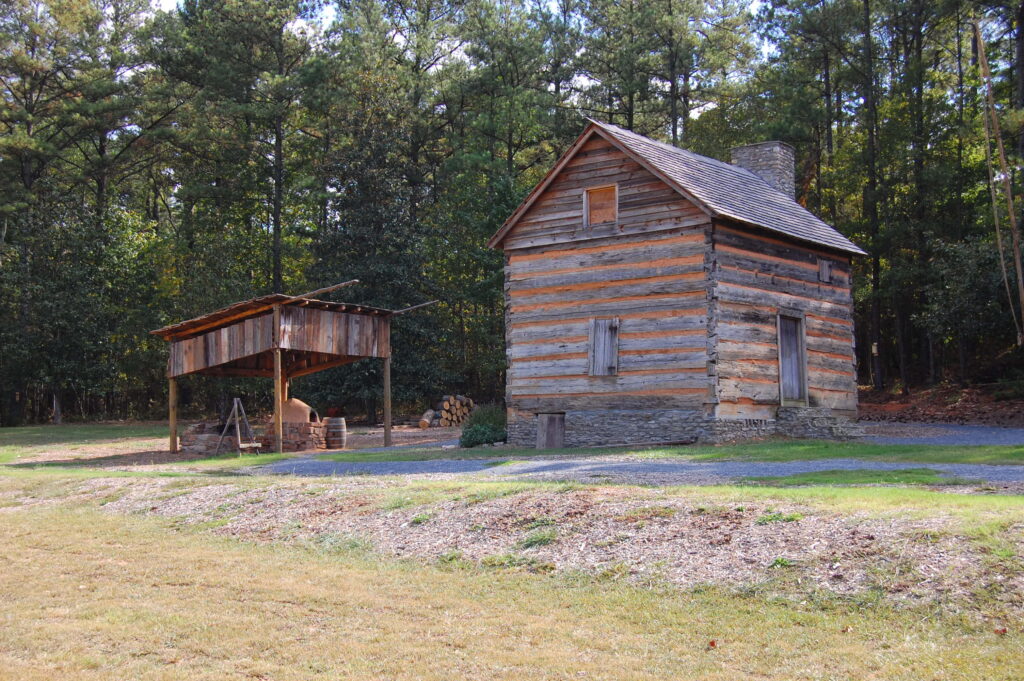
Photograph by Ashley Farrow, Wikimedia Commons
These multistate invasions, coupled with significant territorial loss following the treaties of DeWitt’s Corner and Long Island of Holston (1777), further divided the Cherokees. Many villagers sought peace with the Americans, but a large contingent of warriors continued to fight and relocated their towns to north Georgia. Led by a charismatic warrior named Dragging Canoe, the Chickamauga Cherokees, as they were called, pursued closer relations with the British and other Indian groups who resisted American expansion. They continued to war against the United States for more than a decade after the Treaty of Paris (1783) ended the Revolution. Only after repeated invasions of their homeland did the Chickamauga Cherokees finally agree to end hostilities.
Nineteenth-Century Nationhood and Transformation
The cost of peace was high. Successive treaties with the Americans in the 1790s and early 1800s, such as the Treaty of Tellico (1805), which made the Federal Road possible, eroded Cherokee territory. With the loss of valuable hunting grounds and an important economic commodity (deerskins), the Cherokees struggled to defend their homeland and their way of life.
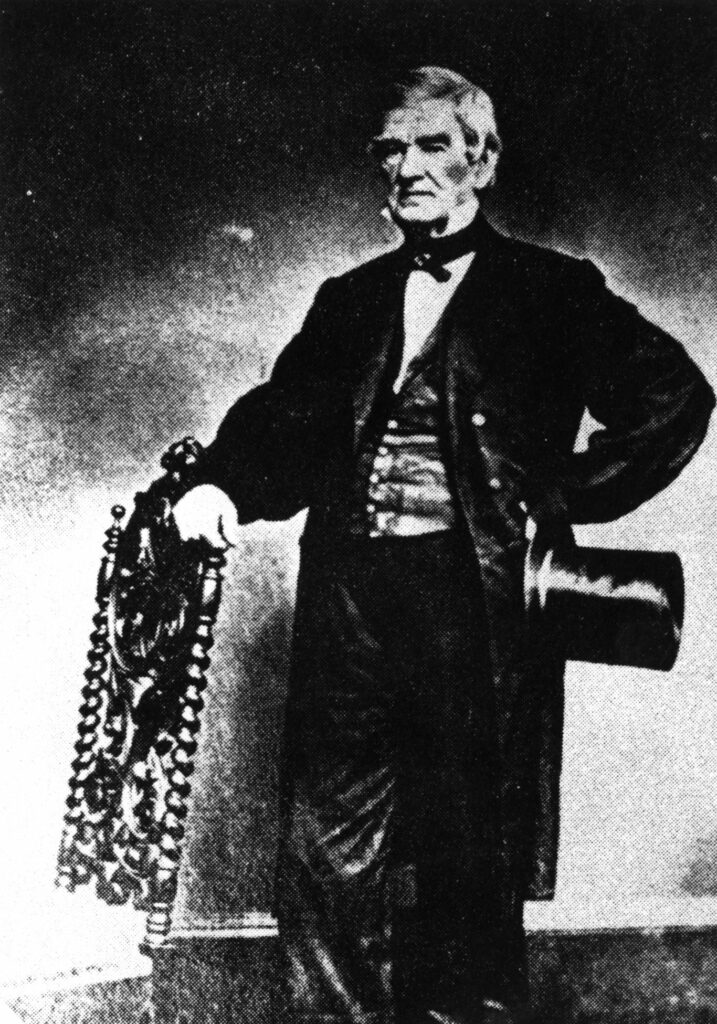
Courtesy of Hargrett Rare Book and Manuscript Library, University of Georgia Libraries.
Central to this effort was the emergence of a more centralized Cherokee society, and in 1827 a constitutional government, the Cherokee Nation, was established. Led by principal chief (the equivalent of president) John Ross, counselor Major Ridge, and Charles Hicks, who were known as the “Cherokee Triumvirate,” this new political entity eventually witnessed the adoption of a written constitution, council, mounted police force, and many other Western-influenced institutions. The new capital at New Echota (near Calhoun in present-day Gordon County), reflected a major demographic change for the Cherokees, whose core areas of settlement had shifted to northwest Georgia.
The transition to nationhood was not an easy process. The Cherokees experienced many difficulties in dealing with both internal and external challenges. Town and regional interests remained strong, and political factionalism intensified throughout the period. Much of this infighting could be connected to vast cultural and economic changes that had reached Cherokee country by the early nineteenth century.
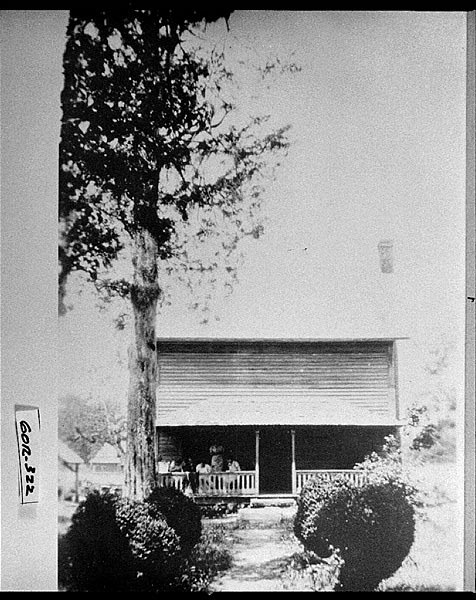
Courtesy of Georgia Archives.
An influx of Europeans and Africans complicated the ethnic and racial makeup of Cherokee society. The deerskin economy had also largely been replaced by an agricultural system and a move toward private ownership of property that encouraged male-centered farming and herding. A proliferation of missionaries to the Cherokees in the early nineteenth century—most notably by Moravians from North Carolina but including those of other denominations as well—also served to create a Euro-Christian-educated elite. The result was social and economic stratification between those Cherokees—such as Joseph Vann, Major Ridge, and John Ross—who turned to plantation agriculture supported by a workforce of enslaved African Americans, and those whose livelihoods and community values were similar to Cherokees of an earlier generation.
The Cherokee Phoenix, the first Native American newspaper in the United States, began publication in the late 1820s and featured both English and Cherokee text (a syllabary created by Sequoyah). Elias Boudinot served as editor from 1828 until 1832, when he was forced to resign because of his stance in favor of Cherokee removal.
Loss of a Nation
In the 1820s and 1830s Georgia conducted a relentless campaign to remove the Cherokees. Between 1827 and 1831 the Georgia legislature extended the state’s jurisdiction over Cherokee territory and set in motion a process to seize the Cherokee land, divide it into parcels, and offer the parcels in a lottery to white Georgians. The discovery of gold on Cherokee territory in 1829 further fueled the desire of Georgians to possess their land. The following year Congress passed the Indian Removal Act, which authorized U.S. president Andrew Jackson to negotiate removal treaties with Native American tribes. Ross and other leaders fought government efforts to separate the Cherokees from their land and appealed to the U.S. Supreme Court. In Worcester v. Georgia (1832) the Court held that the Cherokee Indians constituted a nation holding distinct sovereign powers, but the decision would not protect the Cherokees from removal.
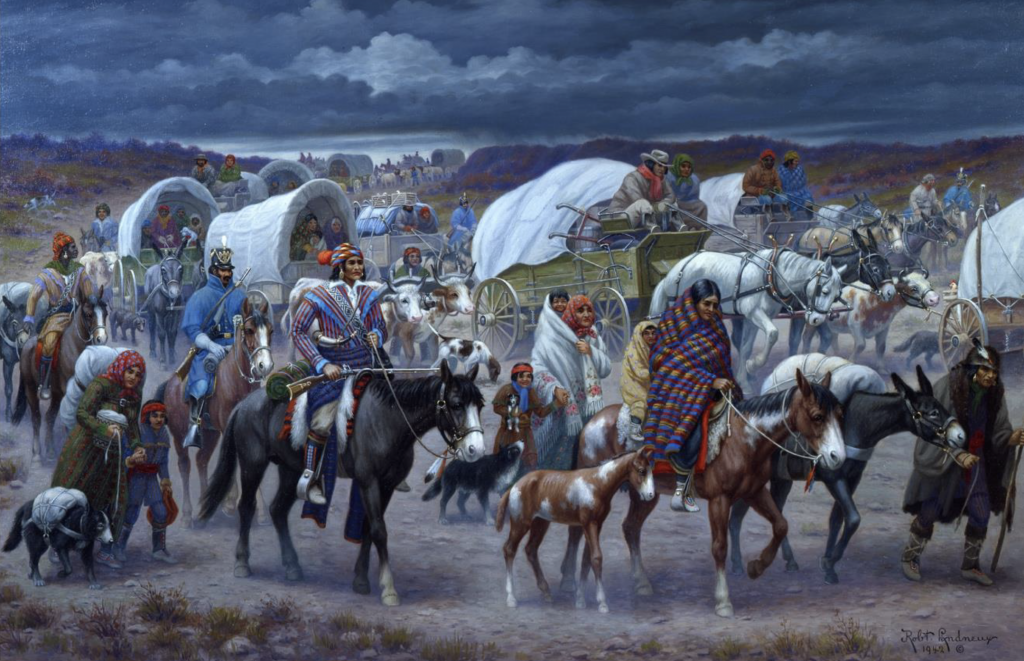
Courtesy of Woolaroc Museum, Bartlesville, Oklahoma
The strategies of the Cherokee leadership diverged sharply. Ridge became convinced that either warfare or negotiation with the U.S. government must proceed. He became a leader of the Treaty Party, which favored removal to Indian Territory west of the Mississippi River (in present-day Oklahoma), in exchange for financial compensation of $5 million to the Cherokees. Ross, on the other hand, refused to believe that Americans would oust the most “civilized” native people in the Southeast. His faith in the republican form of government, the authority of the Supreme Court, and the political power of Cherokee supporters, especially the Whig Party, gave him confidence that Cherokee rights would be protected.
In December 1835 Ridge and a minority of Cherokees signed the Treaty of New Echota without authorization from Ross or the Cherokee government. The illegal treaty was then signed by President Jackson and passed by one vote in the U.S. Senate. Ridge and his family voluntarily moved west, but Ross and other treaty opponents fought its implementation. The Ross faction failed, and in 1838 the military enforced the removal order. Thousands of Cherokees were expelled from their homeland and forced to migrate west. Because of harsh weather conditions, more than 4,000 Cherokees died during the 1838-39 winter on the “trail where they cried,” commonly known as the Trail of Tears. Some of Ross’s supporters later murdered the treaty signers Major Ridge, John Ridge, and Elias Boudinot in retaliation for their role in the Cherokee tragedy.
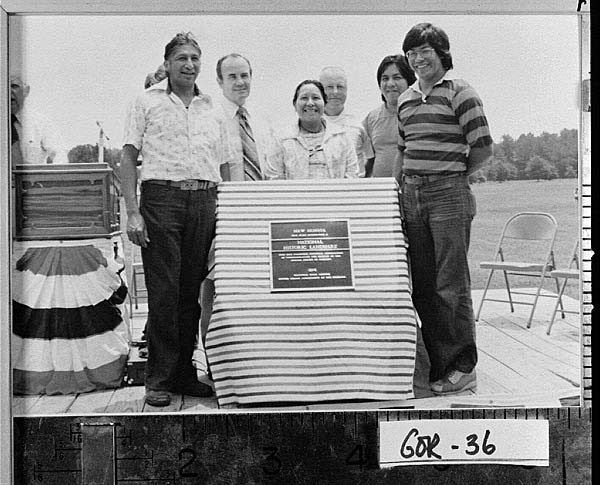
Courtesy of Georgia Archives.
The descendants of those who were removed would become known as the Cherokee Nation of Oklahoma. A smaller number of Cherokees avoided forced removal and remained in the mountains of North Carolina. They became the Eastern Band of Cherokee Indians.





